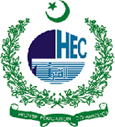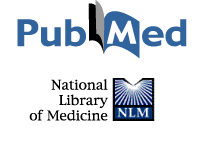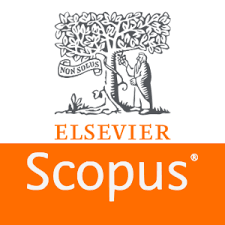PROGNOSTIC IMPACT OF LACTATE DEHYDROGENASE IN LOW AND HIGH-RISK MYELODYSPLASTIC SYNDROMES: A SINGLE CENTER EXPERIENCE FROM PAKISTAN
DOI:
https://doi.org/10.55519/JAMC-01-13491Keywords:
Myelodysplastic syndrome, Cytogenetics, International Prognostic Scoring System, Lactate dehydrogenase.Abstract
Background: The higher level of serum lactate dehydrogenase (LDH) is linked to a worse prognosis in myelodysplastic syndromes. Therefore, the present study was planned to investigate the prognostic utility of baseline lactate dehydrogenase (LDH) in predicting survival of low and high-risk myelodysplastic syndrome (MDS) patients. Methods: This cross-sectional study was conducted at National Institute of Blood Diseases and Bone Marrow Transplantation (NIBD-BMT), PECHS campus, Karachi, Pakistan from January 2022 to January 2024.A total of 44 newly diagnosed MDS patients were included. The Complete Blood counts (CBC) were analyzed by using Sysmex XN-1000 (Sysmex Corporation, Kobe, Japan). The IPSS was calculated for risk stratification. Serum LDH levels were done by using Cobas c311 (Roche Diagnostics, Germany). Baseline LDH <220IU/l was considered normal. All parameters were analyzed by using SPSS version 23. Results: In a total of 44 de novo MDS patients, 29 (65.9%) were male. The median age was 54 ranging 7‒87 years. Among the patients, 32 (72.7%) had LDH ≥220IU/l. No significant differences were found between LDH levels and International Prognostic Scoring System (IPSS) risk stratified groups (p=0.311). Significant association of LDH levels was found with cytogenetic risk category (p=0.011). The median survival time for individuals with LDH ≥220 IU/l was 18 months (95% CI: 8.86‒27.14), compared to 19 months (95% CI: 10.97‒27.03) for LDH < 220IU/l (p=0.296). Conclusion: The present study did not identify significant association between LDH levels and MDS classification, risk stratification, or survival outcomes. Our findings underscore the importance of further research to elucidate the role of LDH in MDS prognosis.
References
1. Arber DA, Orazi A, Hasserjian RP, Borowitz MJ, Calvo KR, Kvasnicka HM, et al. International Consensus Classification of Myeloid Neoplasms and Acute Leukemias: integrating morphologic, clinical, and genomic data. Blood 2022;140(11):1200–28.
2. Aul C, Giagounidis A, Germing U, Ganser A. Evaluating the prognosis of patients with myelodysplastic syndromes. Ann Hematol 2002;81(9):485–97.
3. Malayath P. A study of the prognostic value of lactate dehydrogenase levels in myelodysplastic syndrome. J Evid Based Med Healthc 2017;4(95):5930–3.
4. Sanz GF, Sanz MA, Greenberg PL. Prognostic factors and scoring systems in myelodysplastic syndromes. Haematologica 1998;83(4):358–68.
5. Greenberg P, Cox C, LeBeau MM, Fenaux P, Morel P, Sanz G, et al. International scoring system for evaluating prognosis in myelodysplastic syndromes. Blood 1997;89(6):2079–88.
6. Neukirchen J, Lauseker M, Blum S, Giagounidis A, Lübbert M, Martino S, et al. Validation of the revised international prognostic scoring system (IPSS-R) in patients with myelodysplastic syndrome: a multicenter study. Leuk Res 2014;38(1):57–64.
7. de Swart L, Smith A, Johnston TW, Haase D, Droste J, Fenaux P, et al. Validation of the revised international prognostic scoring system (IPSS‐R) in patients with lower‐risk myelodysplastic syndromes: a report from the prospective European LeukaemiaNet MDS (EUMDS) registry. Br J Haematol 2015;170(3):372–83.
8. Zeng X, Zhang Y, Zhao K, Zhou L, Zhou Y, Xuan L, et al. Somatic mutations predict prognosis in myelodysplastic syndrome patients with normal karyotypes. Signal Transduct Target Ther 2021;6(1):274.
9. Yan X, Wang L, Jiang L, Luo Y, Lin P, Yang W, et al. Clinical significance of cytogenetic and molecular genetic abnormalities in 634 Chinese patients with myelodysplastic syndromes. Cancer Med 2021;10(5):1759–71.
10. Wang N, Wang F, Shan N, Sui X, Xu H. IDH1 mutation is an independent inferior prognostic indicator for patients with myelodysplastic syndromes. Acta Haematol 2017;138(3):143–51.
11. Nazha A, Narkhede M, Radivoyevitch T, Seastone D, Patel B, Gerds A, et al. Incorporation of molecular data into the Revised International Prognostic Scoring System in treated patients with myelodysplastic syndromes. Leukemia 2016;30(11):2214–20.
12. Bernard E, Tuechler H, Greenberg PL, Hasserjian RP, Arango Ossa JE, Nannya Y, et al. Molecular international prognostic scoring system for myelodysplastic syndromes. NEJM Evid 2022;1(7):EVIDoa2200008.
13. Germing U, Hildebrandt B, Pfeilstöcker M, Nösslinger T, Valent P, Fonatsch C, et al. Refinement of the international prognostic scoring system (IPSS) by including LDH as an additional prognostic variable to improve risk assessment in patients with primary myelodysplastic syndromes (MDS). Leukemia 2005;19(12):2223–31.
14. Pfeilstöcker M, Reisner R, Nösslinger T, Grüner H, Nowotny H, Tüchler H, et al. Cross‐validation of prognostic scores in myelodysplastic syndromes on 386 patients from a single institution confirms importance of cytogenetics. Br J Haematol 1999;106(2):455–63.
15. Wimazal F, Sperr WR, Kundi M, Meidlinger P, Fonatsch C, Jordan JH, et al. Prognostic value of lactate dehydrogenase activity in myelodysplastic syndromes. Leuk Res 2001;25(4):287–94.
16. Aul C, Gattermann N, Germing U, Runde V, Heyll A, Schneider W. Risk assessment in primary myelodysplastic syndromes: validation of the Düsseldorf score. Leukemia 1994;8(11):1906–13.
17. Gonzalez-Medina I, Bueno J, Torrequebrada A, López A, Vallespı T, Massagué I. Two groups of chronic myelomonocytic leukaemia: myelodysplastic and myeloproliferative. Prognostic implications in a series of a single center. Leuk Res 2002;26(9):821–4.
18. Li W-W, Li Y, Wang XM. Correlation of laboratory indexes with prognosis in patients with myelodysplastic syndrome. Zhongguo Shi Yan Xue Ye Xue Za Zhi 2012;20(1):116–9.
19. Moon JH, Kim SN, Kang BW, Chae YS, Kim JG, Baek JH, et al. Predictive value of pretreatment risk group and baseline LDH levels in MDS patients receiving azacitidine treatment. Ann Hematol 2010;89(7):681–9.
20. Anwar N, Arshad A, Nadeem M, Khurram S, Fatima N, Sharif S, et al. Clinicohematological and cytogenetic profile of myelodysplastic syndromes in Pakistan-compare and contrast. Mol Cytogenet 2017;10:17.
21. Ehsan A, Aziz M. Clinico-haematological characteristics in Pakistani patients of primary myelodysplastic syndrome according to World Health Organization classification. J Coll Physicians Surg Pak 2010;20(4):232–6.
22. Mahmood R, Altaf C, Ahmed P, Khan SA, Malik HS. Myelodysplastic syndrome in Pakistan: Clinicohematological characteristics, cytogenetic profile, and risk stratification. Turk J Hematol 2018;35(2):109–15.
23. Sultan S, Irfan SM. Adult primary myelodysplastic syndrome: experience from a tertiary care center in Pakistan. Asian Pac J Cancer Prev 2016;17(3):1535–7.
24. Anwar N, Memon FA, Shahid S, Shakeel M, Irfan M, Arshad A, et al. The Dawn of next generation DNA sequencing in myelodysplastic syndromes-experience from Pakistan. BMC Genomics 2021;22(1):903.
25. Hong M, He G. The 2016 revision to the World Health Organization classification of myelodysplastic syndromes. J Transl Int Med 2017;5(3):139–43.
26. Standing Committee on Human Cytogenetic Nomenclature, Harnden DG, Klinger HP. An International System for Human Cytogenetic Nomenclature (1985): ISCN (1985): Report of the Standing Committee on Human Cytogenetic Nomenclature. Karger S; 1985.
27. Forkasiewicz A, Dorociak M, Stach K, Szelachowski P, Tabola R, Augoff K. The usefulness of lactate dehydrogenase measurements in current oncological practice. Cell Mol Biol Lett 2020;25:1–4.
28. Wen J, Yang K, Huang J, Sun S. Recent advances in LDH-based nanosystems for cancer therapy. Mater Des 2021;198:109298.
29. Wimazal F, Sperr W, Kundi M, Vales A, Fonatsch C, Thalhammer-Scherrer R, et al. Prognostic significance of serial determinations of lactate dehydrogenase (LDH) in the follow-up of patients with myelodysplastic syndromes. Ann Oncol 2008;19(5):970–6.
30. Zhang YQ, Dai HB, Wang JH, Li XY, Dai SM, Yao DD, et al. Prognostic significance of serial determinations of lactate dehydrogenase in follow-up for patients with myelodysplastic syndrome. Zhongguo Shi Yan Xue Ye Xue Za Zhi 2011;19(1):85–9.
31. Rana FA, Robert HM, Ilyas M, Mahmood A, Amir M, Khan N. Diagnostic utility of serum lactate dehydrogenase levels (ldl) in differentiating megaloblastic anemia from myelodysplastic syndromes in pakistan: Serum Lactate Dehydrogenase Levels. Pak Armed Forces Med J 2021;71(5):1539–43.
32. Gupta R, Rahman K, Singh MK, Kumari S, Yadav G, Nityanand S. Clinico-pathological spectrum and novel karyotypic findings in myelodysplastic syndrome: Experience of tertiary care center in India. Mediterr J Hematol Infect Dis 2017;9(1):e2017048.
Downloads
Published
How to Cite
Issue
Section
License
Copyright (c) 2025 Vijeet Kumar, Laraib Majeed, Aisha Arshad, Naveena Fatima, Nida Anwar

This work is licensed under a Creative Commons Attribution-NoDerivatives 4.0 International License.
Journal of Ayub Medical College, Abbottabad is an OPEN ACCESS JOURNAL which means that all content is FREELY available without charge to all users whether registered with the journal or not. The work published by J Ayub Med Coll Abbottabad is licensed and distributed under the creative commons License CC BY ND Attribution-NoDerivs. Material printed in this journal is OPEN to access, and are FREE for use in academic and research work with proper citation. J Ayub Med Coll Abbottabad accepts only original material for publication with the understanding that except for abstracts, no part of the data has been published or will be submitted for publication elsewhere before appearing in J Ayub Med Coll Abbottabad. The Editorial Board of J Ayub Med Coll Abbottabad makes every effort to ensure the accuracy and authenticity of material printed in J Ayub Med Coll Abbottabad. However, conclusions and statements expressed are views of the authors and do not reflect the opinion/policy of J Ayub Med Coll Abbottabad or the Editorial Board.
USERS are allowed to read, download, copy, distribute, print, search, or link to the full texts of the articles, or use them for any other lawful purpose, without asking prior permission from the publisher or the author. This is in accordance with the BOAI definition of open access.
AUTHORS retain the rights of free downloading/unlimited e-print of full text and sharing/disseminating the article without any restriction, by any means including twitter, scholarly collaboration networks such as ResearchGate, Academia.eu, and social media sites such as Twitter, LinkedIn, Google Scholar and any other professional or academic networking site.










